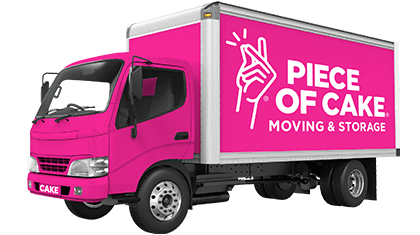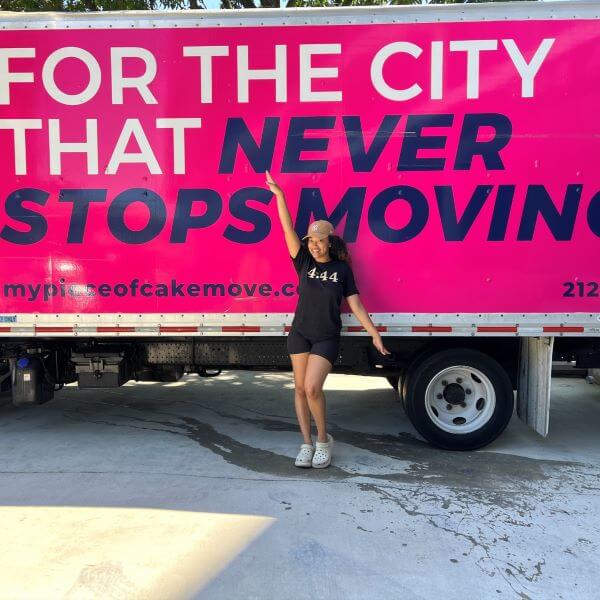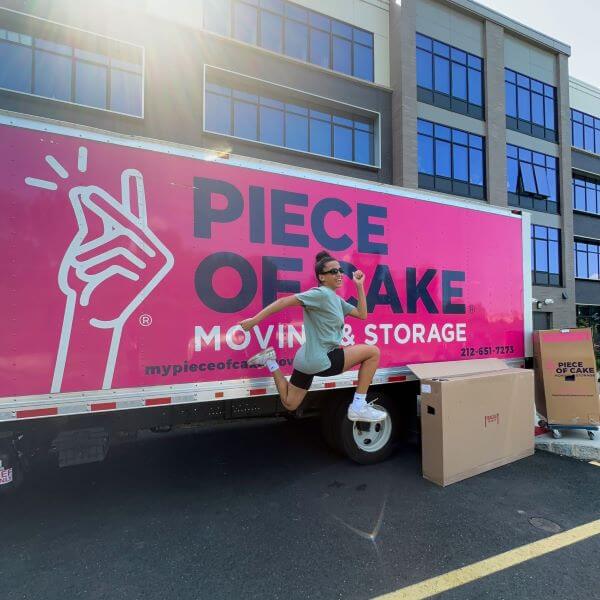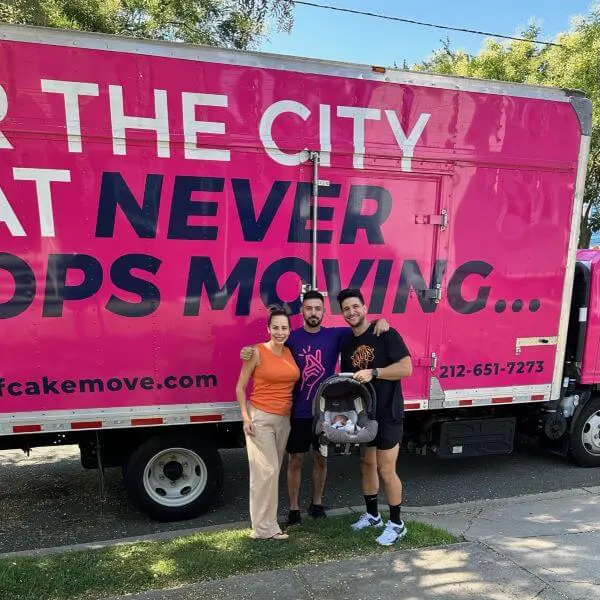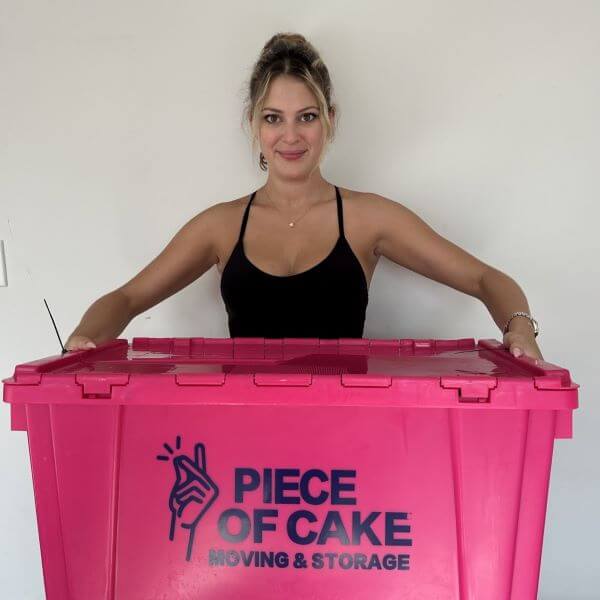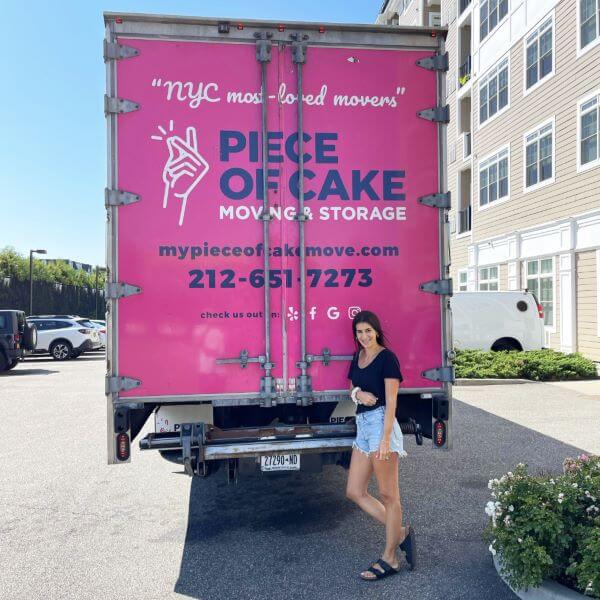11 tips for moving seamlessly with children
 If you’re moving house in one of the world’s most populous cities and you’re doing it with children, there are predictable challenges that are easy to plan for and some unexpected hiccups which are worth having on your radar.
If you’re moving house in one of the world’s most populous cities and you’re doing it with children, there are predictable challenges that are easy to plan for and some unexpected hiccups which are worth having on your radar.
The hustle doesn’t stop for anyone in New York. Families juggle work, traffic, school pick ups, projects and housework with the same aplomb as they did in their 20s when they were sharing a 1 bedder in the East Village with 4 other roommates and milk crates were considered seating.
Being New York tough doesn’t come easy, it comes from being smarter with your time and planning properly to avoid unnecessary headaches. If you’re moving house in one of the world’s most populous cities, and you’re doing it with children, there are some predictable challenges that are easy to plan for and some unexpected hiccups which are worth having on your radar in advance so they don’t take you by surprise.
There’s nothing Piece of Cake movers love seeing more than happy children waving them away from the curb after a successful move, and they’ve shared some of their key advice to help families execute their move with minimum tears and stress.
1. Talk it over.
While the adults in the household know the end date on their lease and where they want to move next, the young members of the household don’t. Have an age appropriate conversation with the children in the family, stepping out all the great reasons you are making a move and what it will mean for them. Explain the packing process and how you will set aside an area that is cleared and box free for them to play until it’s time to get on the road. If they’re old enough, talk about setting aside all their favorite things in their own bag so they have comfort toys, snacks or a pacifier when they need it.
 In advance of this conversation, know your plan around who will look after the children and any fur babies on moving day, as it’s hazardous for them to be running loose around open doors and large items being moved through hallways. Ideally, within your support network is someone the children love to visit, so they can plan some fun activities while you observe the move, like a movie with popcorn, a living room campout or a trip to the park.
In advance of this conversation, know your plan around who will look after the children and any fur babies on moving day, as it’s hazardous for them to be running loose around open doors and large items being moved through hallways. Ideally, within your support network is someone the children love to visit, so they can plan some fun activities while you observe the move, like a movie with popcorn, a living room campout or a trip to the park.
Enabling the children to understand what will happen, before, during and after the move is a great way to allay their concerns. Feel free to repeat these conversations or spread them out over a couple of weeks as you think is best for their temperament and needs.
2. Motivate the family with small projects.
Where their age allows, get the children involved in planning a new space they can imagine and create when you arrive. They might want to draw pictures with you of a new reading nook for their room and then choose some fun, inexpensive pillows to decorate it. You could raise a sprout farm on the window sill, as many inexpensive kits you purchase online like broccoli sprouts come with seeds and have a 3-5 day growth cycle. At the end of it there’s a healthy garnish for their avocado toast or salad and a feeling of accomplishment you can celebrate.
If the family has some time to care for a pet, you could look at a low maintenance option like an aquarium fish and choose your tank and plants so that after you settle in you can go and bring it all home. As children crave routine and predictability, you may want to plan a cubby tent for the living room as their chill zone in the new house when the unpacking and chaos becomes too much for them. It’s all about teaching the children how to find their place in your moving plans and where to put their focus as cleaning and clearing has your attention.

3. Make a plan.
Identifying your project deadlines before moving day will help you stay on top of packing and running your life at the same time. Starting at your moving day, work backwards identifying blocks of time in the weeks leading up to your move in which to pack each room, leaving some scope for unexpected events like a sick child, a work presentation or apartment inspections if you’re yet to sign a lease.
This includes timings around any leave from work you need to apply for in advance, booking sitters for the children and how you will manage unpacking when you arrive. You’ll also need to factor in time for last minute chores in your neighborhood like picking up clothes from the local dry cleaner, getting medicine scripts filled and changing your address details for deliveries and subscriptions.
Download our moving checklist to help you keep track of all the moving parts and put up your hand to ask for help when it feels like your deadlines are running away from you. We recommend setting aside 2 weeks for packing a 1 bedroom home, and up to 4 weeks for a family move from a 2 bedroom home. Start the packing process with least essential areas like a dining room and study and end the process with the bathroom. For some tips on how to stage your packing, try our guide here.
4. Talk to movers.
If you’re moving with a family, it’s highly recommended you use professionals to do the heavy lifting instead of attempting a DIY effort. At this stage, a little due diligence can go a long way. Create a shortlist of 3-4 moving companies and do some research online, looking at Yelp and Google reviews, asking the right questions and reviewing their terms and conditions on any last minute changes including the return of a deposit.
Ensure you confirm their compliance and regulatory credentials and determine whether you want additional insurance for valuables. Affordable flat fee options from movers like Piece of Cake can give you peace of mind that you can stick to your budget and have a safe and reliable team handling your household items. In some cases, movers will disassemble and reassemble key items like beds as part of their service, so you can get a good night’s sleep at the end of moving day.
Piece of Cake will also box your TV and provide wardrobe boxes free of charge for the day so you don’t have to worry about your clothes arriving crumpled or damaged.
Be sure to ask whether you might be subject to any extra charges on the day before finalizing your booking. When it comes to your budget, saving a few hundred dollars for a less scrupulous mover is not worth the savings if something goes wrong. There are many affordable moving options in New York City and as long as you ensure they won’t ping you with surprise charges on the day, you can get on with packing your home until your movers get in touch closer to the day to confirm their arrival time.

5. Get everyone on the same page.
Once you have decided on a mover and a moving date, be sure to engage with your building co-op or building management team to coordinate times for a service elevator and get their Certificate of Insurance (COI) requirements. There are some compulsory measures you will need to tick off in advance before your movers can even enter your building like a COI with the correct details, any additional protections for common areas like temporary masonry on the floor and a moving day deposit to cover additional damages.
Movers like Piece of Cake can send your COI directly to your building management team but it’s your responsibility to connect them and identify any other requirements you need to fulfill to ensure there are no last minute surprises on the day. Once the date and time is locked in, go ahead and confirm your other arrangements like sitters for the children, confirm timings to pick up keys for your new building, leave from work and plan the connection or moving of utilities providers like Wi-Fi.
6. Declutter
Every good move starts with a review of what you need to take, toss or recycle so you aren’t paying to move items you don’t want. This is a great prep exercise for reducing your packing and unpacking time. Our rule of thumb is to only donate items that are in good, clean, damage free condition. There is a raft of charity shop fronts around the city that you can contact to offer your items like Housing Works, Goodwill and the Salvation Army.
For items of sentimental value, consider having a couple of friends or family over and inviting them to choose anything they love that you want to stay ‘in the family’. You can always do some packing at the same time, order a pizza, and make it a social afternoon instead of a chore.
For everything that needs to be thrown out, there are a host of programs around New York to help you dispose of electricals, textiles, large furniture and metal objects. Some of these items need to be recycled, others need to be disposed of at special drop off points. The Sanitation Department can fine you for leaving items out on the sidewalk unsolicited, without pre-arranging a free pick up here online. Be sure to use their search tool to check the options for different types of items. Finally, check the list of items no movers will relocate for you, like paints, pesticides or flammable items and dispose of them responsibly ahead of time.
7. Source your supplies.
Quality, damage free packing supplies are essential for a successful move but there are ways to reduce your budget here by identifying sources of clean and sturdy boxes you can repurpose like your building recycling area and book stores.
The rule of thumb for packing supplies is to use thicker, smaller boxes for heavier items and have a generous supply of packing paper handy for ensuring items don’t move around in transportation as this is a common reason items are damaged or broken.
If you are using professional movers, they can deliver packing supplies to your home so you don’t have to worry about finding boxes, tape and bubble wrap. You may even let the children decorate or play with one of the boxes until you need it. Every parent knows children seem to love packaging more than the toy it arrived in when they’re at a certain age.
If you’re moving in winter, you may want to consider renting plastic bins instead of using boxes as they are waterproof, stack easily, and don’t leave you with any waste like tape and boxes to dispose of at the end of the move.

8. Pack safely
While packing boxes, be sure to put heavier items as the base of the box to prevent it toppling around small children and don’t overpack your boxes. Scrunch up balls of packing paper to fill the gaps when a box is almost full and be sure to seal it well with a couple of layers of tape in crossover directions.
Do not stack up boxes high because little ones can bump into towers of boxes and they love to climb. Labelling will be your saving grace if you need an item in a hurry when you arrive, so label, label, label to your heart’s content once you’ve packed a box.
On your intensive packing days, give children an area in which they can play safely and you can supervise them but is well away from you wrapping long stemmed glasses or heavy stoneware containers. Be mindful of keeping some space clear for the family to move around the house as boxes start to grow. You’ll still need to get ready each morning, access common spaces and function for a couple of weeks depending on how long it takes you to pack the entire home. If you have a little climber in the house, you may want to keep empty shelving screwed into the wall until moving day to prevent a tipping hazard. This is something you can ask in advance for your movers to be prepared to do.
9. Handling the essentials.
As you pack and move through each room, you will identify essential items like cell phone chargers, comfort toys and medication that you need to leave out as you’ll be using them up until the last moment. These are the items we recommend setting aside in a central area and packing into a moving day suitcase. Your suitcase is an item that can stay with you when it’s time to leave your old apartment and travel to your new home with your family. Even if you’re staying within 5 miles of your old neighborhood, moving day is busy enough without needing to track down a child’s inhaler at the last moment.
This suitcase can also include your essential documents, valuables like jewelry and other items that you prefer to keep closeby. You may want to pack some healthy snacks and bottles of water or juice in this suitcase so there are easy options handy throughout the day.
Be sure to know where you will store this suitcase and keep it secure on moving day while your apartment doors are open and people are coming and going, especially if you decide to get a coffee and let the movers get on with loading the truck in the middle of your move.
You may want to keep this suitcase with a neighbor or friend until you’re ready to get on the road, lock it in a storage bay in your building basement, or place it in the trunk of your vehicle until you’re ready to leave. Whatever you decide, this moving day item will make arrival at your new home a simpler experience and you’ll be glad you don’t have to start opening boxes to settle the family in.
10. Late moves and back up.
If the only moving slot you could secure on the right day with agreement from all stakeholders like your boss and building management is an afternoon move you may want to consider an alternative to settling your children into your new home that night. While it seems like an unnecessary expense, the ease of having children eat dinner when they’re hungry, have bathtime when they’re tired and go to sleep at a good hour before the tears begin is well worth the cost of booking a nearby hotel for a night.
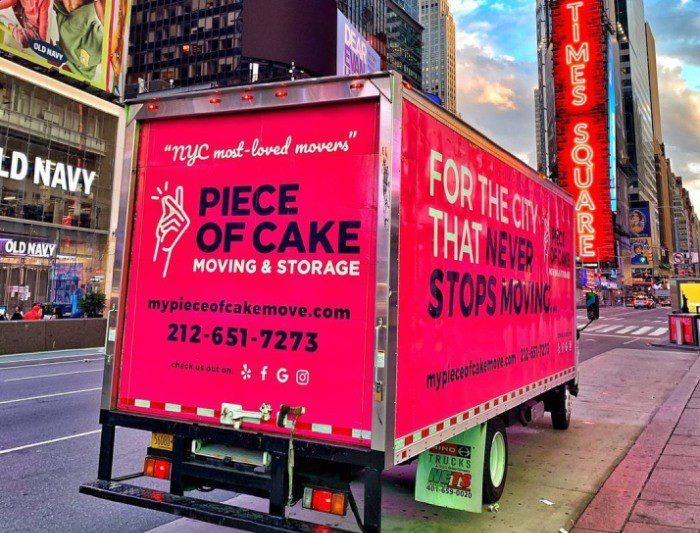 One parent can settle the children for the night, while the other parent or an authorized friend supervises the rest of the move and signs off on delivery paperwork. It’s also a logical solution for parents who have already spent several late nights unpacking and moving furniture while juggling the rest of their responsibilities.
One parent can settle the children for the night, while the other parent or an authorized friend supervises the rest of the move and signs off on delivery paperwork. It’s also a logical solution for parents who have already spent several late nights unpacking and moving furniture while juggling the rest of their responsibilities.
Consider the timings: if your movers aren’t arriving at your home until 3pm or 4pm and they need 2-3 hours to load the van, depending on how much furniture you have arranged for them to disassemble, they won’t be getting on the road until it’s almost bedtime for your little ones. Once your movers arrive at your new location, they’ll be looking to unload safely, reassemble items and place furniture which can also take 2-3 hours. As long as someone authorized to supervise this side of the move is at your new home, they can lock up when the movers leave and drop off the keys or meet you there in the morning, after everyone has had a good night’s sleep and breakfast.
It makes opening your new chapter a much more comfortable and happy experience for everyone involved, instead of tears, short tempers and exhaustion. If you decide to plan this hotel option, step out a layout plan in advance with your moving company, so they place furniture items where you want them and don’t need to call you to check where each bed should be set up. A video call will enable you to check final arrangements before the movers leave, if you want to be sure.
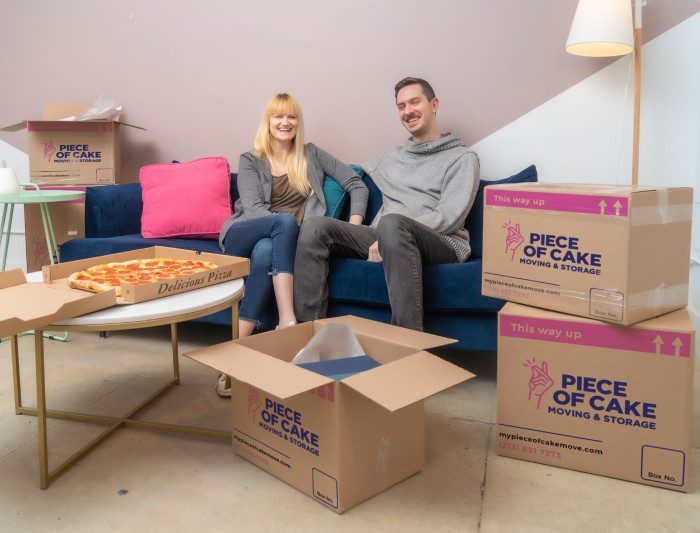
11. Keep it in perspective.
Ultimately, every parent keeps their sense of humor handy to deal with some of the ups and downs of parenting and that goes double for moving. Expect some chaos and be patient with yourself, not just the little ones. Abandon unpacking on sunny days to explore the neighborhood and enjoy your new environment.
The mess will clear eventually, you will find that sought after item after you’ve searched 14 boxes and all that matters in the end is that you arrived safely. Unless you’ve paid professionals to settle you in, unpacking takes time.
Surrender some meals to the convenience of takeout and just know even the best planned moves can present surprises. No matter how long it takes to find your feet, it’s a big moment for your family and as long as you’re together the rest will fall into place.
Ready to make a move? Get in touch today for an obligation-free guaranteed flat price moving quote.
Related articles
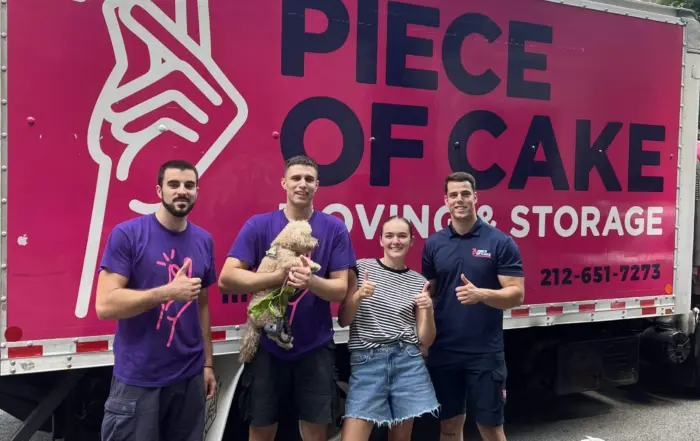
Average Moving Cost in Connecticut: Factors that Affect Moving Prices
Learn More

9 Tips for Moving to a Building with no Elevator
Learn More
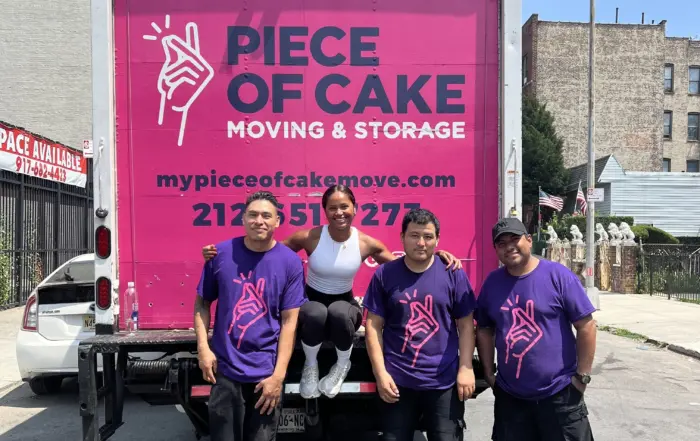
How to Get Rid of a Couch in 8 Easy Ways
Learn More
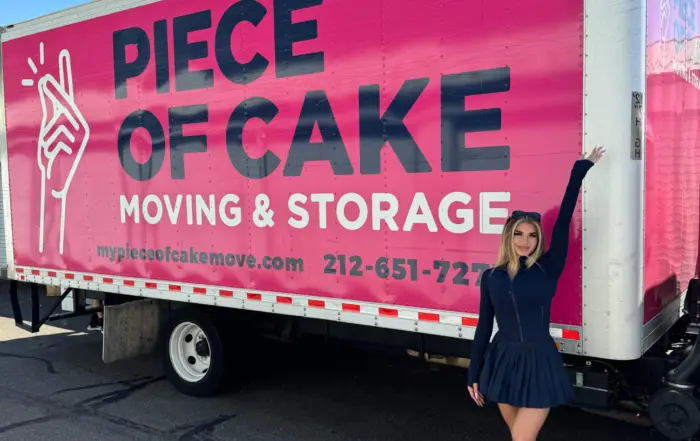
Average Moving Costs in NJ: Factors that Affect Moving Prices
Learn More
